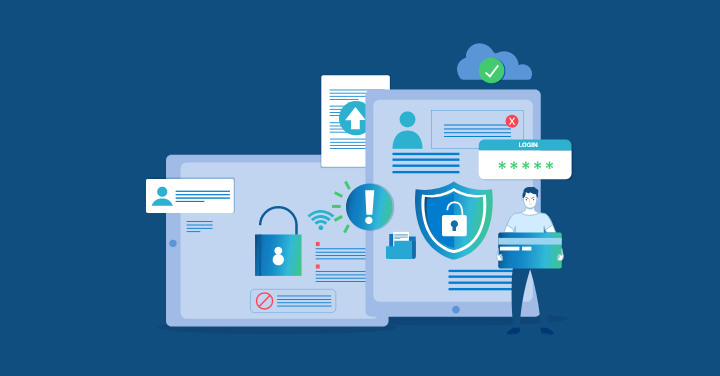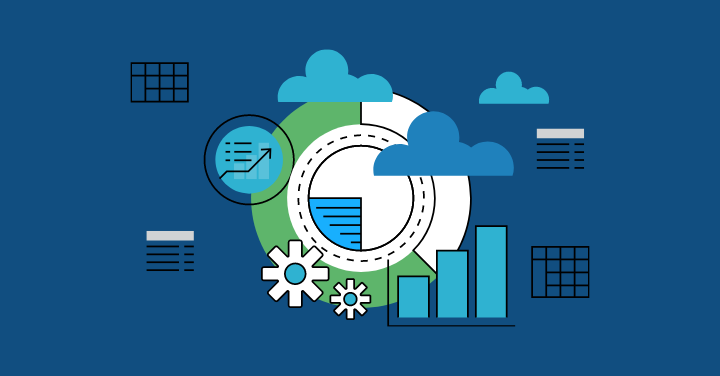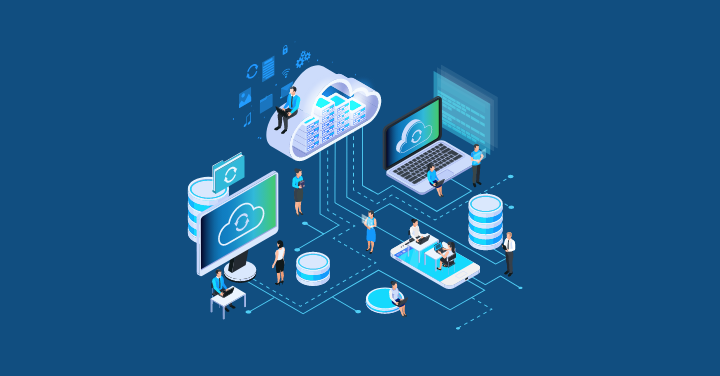In today’s dynamic digital landscape, where security breaches pose great financial threats, adopting the best monitoring practices becomes a strategic necessity for your business.
By safeguarding your business from security vulnerabilities, software bugs, and potential risks, continuous monitoring for cybersecurity lays a strong foundation for the sustained growth and success of your organization’s security.
What is Continuous Monitoring?
Continuous monitoring is a systematic approach that involves the ongoing observation and analysis of your business’s digital activities, like applications, networks, data centers, automation tools and other digital systems.
It aims to provide you with real-time insights into the health, security, and performance of your IT infrastructure on an ongoing basis, ensuring that potential problems and threats are addressed quickly in real time.
The key benefit of continuous monitoring lies in its ability to detect and address potential issues, ranging from security threats to performance constraints, ensuring a resilient and efficient operational environment for your organization’s security.
By adopting this method, your business gains a comprehensive understanding of its digital landscape, allowing for informed decision-making and risk mitigation.
To implement continuous monitoring effectively, you are required to deploy monitoring tools and solutions, such as monitoring software, across various IT components.
These tools establish metrics, thresholds, and alerts, enabling automated responses to deviations from established norms and a proactive approach to addressing issues, providing greater visibility.
The continuous monitoring process serves as a personalized and dynamic safeguard, aligning with your business’s specific needs and providing a defense against the evolving challenges digitally.
How does Continuous Monitoring in Cyber Security Help Your Business?
Continuous monitoring in cyber security is a powerful strategy that enriches your business’s security. By tracking network activities, system behaviors, and potential vulnerabilities, continuous monitoring provides visibility into evolving cyber threats.
It means your digital world gets a quick response to security incidents and prevents threats from growing.
Continuous monitoring also supports continuous compliance, ensuring adherence to industry regulations and data protection standards.
Now, let’s explore the key benefits of continuous monitoring in cyber security:
1. Continuous monitoring in cyber security identifies and responds to cyber threats in real-time.
2. It prevents security incidents before they grow bigger.
3. Continuous monitoring of network activities and system behaviors for potential vulnerabilities.
4. The monitoring process ensures adherence to regulatory requirements and data protection standards.
5. It fortifies defenses against unauthorized access, security and data breaches.
6. Continuous monitoring streamlines business operations by identifying and resolving potential issues.
7. In continuous monitoring, quick adaptation to new and evolving cyber threats provides a farsighted defense.
Let’s see how you can benefit from all the above points in real life by heading towards the best practices to adopt for continuous monitoring.
What are the Best Practices for Continuous Monitoring?
The best practices of continuous monitoring involve:
1. Enabling Monitoring for All Your Apps and Infrastructure Components
If you want to strengthen your IT system, maintain smooth operations, and optimize resource usage, enabling monitoring for all applications and information systems is an unavoidable step.
It helps in vulnerability scanning, vulnerability management, detecting security risks, removing cyber threats and risk management. The process involves implementing monitoring agents across applications, servers, networks and databases.
To initiate this process, select appropriate monitoring tools based on your requirements. Once chosen, allocate these tools across your IT infrastructure.
For this to happen, Monitoring agents, a type of software, are installed on individual servers, applications, or network devices. These agents act as collectors, gathering data on significant metrics like resource usage, response times, and potential security threats.
These agents send collected data to a central system called a monitoring platform or dashboard. This centralized location provides a comprehensive view of the entire IT infrastructure. By regularly analyzing the data received, you gain insights into how well your systems function.
The requirement for effective monitoring lies in choosing tools that align with your specific needs and goals. The process involves careful planning to determine what metrics are essential for your organization, selecting suitable monitoring tools, and deploying monitoring agents accordingly.
This approach ensures that you have a continuous, real-time understanding of your IT systems, allowing for quick problem identification, performance optimization, and improved security posture.
2. Configuring and Tuning your Continuous Monitoring Tools and Solutions
This process revolves around customizing the settings to align with your specific needs. It includes defining the metrics, setting thresholds, establishing alerts, and configuring dashboards for your monitoring tools. Let’s understand each point separately.
Define Metrics
Identify the key performance indicators (KPIs) and metrics that are most relevant to your IT environment. This could include measures like CPU usage, memory consumption, network latency, or application response times.
Set Thresholds
Establish thresholds for each metric to define what is considered normal or acceptable performance. Thresholds act as benchmarks, triggering alerts when metrics surpass predefined limits, indicating potential issues.
Configure Alerts
Fine-tune alert configurations based on the thresholds set. Alerts should be configured to notify relevant personnel when deviations from normal performance occur. This ensures timely responses to emerging problems.
Optimize Dashboards
Customize dashboards to display the most critical information in a clear and accessible format. Tailor the dashboards to the needs of different stakeholders, such as IT administrators, developers, or business leaders, ensuring relevant insights are readily available.
Minimize Noise
Adjust configurations to minimize unnecessary alerts and data noise. Fine-tune sensitivity settings to filter out non-critical events, preventing alert fatigue and allowing teams to focus on significant issues.
Reduce Redundancy
Eliminate redundancy in the data collected and analyzed. Avoid duplication of metrics efforts that provide similar insights. Channeling your monitoring process enhances efficiency and simplifies data interpretation.
Regular Review and Adjustment
Don’t forget to periodically review and adjust the configurations to align with the evolving needs of your organization. Technology environments change and your monitoring setup should adapt accordingly.
By configuring and tuning your monitoring tools in this manner, you optimize their performance and accuracy. This not only ensures that you capture the most relevant information but also reduces the risk of being attacked with excessive or redundant data.
Your goal is to stop security incidents and create a finely tuned monitoring system that provides actionable insights and information security, stop security breaches, avoid potential threats and support the overall health and performance of your IT infrastructure.
3. Establish and Follow a Consistent Monitoring Policy and Procedure
Why You Should Establish and Follow a Consistent Monitoring Policy and Procedure? Because a well-framed policy and procedure keep an eye on what’s happening in your whole IT system.
Continuous security monitoring measures protect your data, lower the risk of data breaches and avoid cyber security risks like unauthorized access and leaking of sensitive information.
A clear policy also helps your security teams spot and deal with security issues early on by closely watching user activity and system behavior.
Now that you know why this step is vital, let’s look into – How You Can Establish and Follow a Consistent Monitoring Policy and Procedure.
Define Roles
This process begins by defining roles within the monitoring team. Ensure that each member has well-defined responsibilities. For example, one team member can focus on overseeing server performance, while another concentrates on network security, ensuring a distributed and continuous compliance approach.
Set a Clear Objective
After allocating the roles, clearly state the goal of your monitoring policy, specifying what areas it should cover, like application monitoring, tracking user activity or intrusion detection systems.
Determine Scope
The next step involves outlining the scope of monitoring activities. Identify critical aspects such as servers, applications, network traffic, and specific performance metrics.
By clearly delineating the monitoring scope, create a roadmap for the team, specifying the frequency of checks, whether they are performed daily, weekly, or in real-time.
Define a Threshold
Establish criteria for triggering alerts and defining thresholds for key metrics like CPU usage or response times. By doing so, the focus of the monitoring system sharpens, ensuring that alerts are activated only in response to genuine security information, thus preventing unnecessary notifications.
A well-crafted resolution plan is essential for addressing data protection accurately. This plan outlines who needs to be informed and delineates the steps for resolution, whether through manual intervention, automated responses, or a combination of both.
Consistency is paramount in the execution of an effective strategy. Standardized procedures and processes ensure a cohesive and efficient approach, reducing the likelihood of confusion and fostering a unified response to monitoring activities.
Regular reviews and adjustments from various sources complete the monitoring strategy. Periodic assessments allow the plan to adapt to evolving IT needs, ensuring its relevance and effectiveness over time.
A clear and comprehensive monitoring strategy with clearly defined team roles, scope, alerting rules, resolution plans, consistency, and regular reviews, is necessary for managing your organisation’s security posture.
4. Train and Educate Your Monitoring Team and Other Stakeholders
Training and educating your monitoring team and other stakeholders is an inevitable component in ensuring the effective utilization of monitoring tools and solutions.
This process involves equipping the monitoring team and relevant stakeholders with the necessary skills and knowledge to understand and utilize monitoring tools.
To begin, training should focus on the practical aspects of using monitoring tools, providing hands-on experience in configuring settings, interpreting data, and navigating dashboards.
This hands-on approach helps team members and stakeholders become familiar with the tools’ functionalities and enhance their overall proficiency.
Additionally, education efforts should emphasize– the interpretation of data and insights generated by the monitoring tools. Team members should be trained to analyze performance metrics, identify trends, and recognize potential issues based on the data provided.
This knowledge empowers the team to make informed decisions and respond effectively to emerging challenges.
Furthermore, the training program should cover the appropriate response protocols to alerts and reports. This includes understanding the severity of alerts, establishing escalation procedures, and implementing timely responses to ensure quick issue resolution.
Moreover, improved collaboration and communication among the team and other stakeholders should be a key goal of this training initiative. This shared understanding encourages a cohesive response to monitoring data, promoting a culture of collaboration and proactive problem-solving.
By investing in the training and education of your team and stakeholders, you not only enhance their technical capabilities but also foster a collaborative and informed approach to monitoring objectives. This, in turn, contributes to a more resilient IT environment.
5. Review and Update Your Monitoring Tools, Solutions, Policies, and Procedures
Reviewing and updating your monitoring tools, solutions, policies, and procedures is essential for adapting to the evolving needs and challenges of your IT systems.
Periodic evaluations of monitoring tools involve assessing performance, exploring potential upgrades, and ensuring compatibility with emerging technologies.
You need to stay attuned to changing IT trends to embrace innovative approaches and technologies. It ensures flexibility and relevance in your overall strategy.
To do it, you can start by evaluating your monitoring tools, assessing their performance, checking for newer versions, and ensuring compatibility with the latest technologies. Staying informed about the newest monitoring tech helps maintain the strength and readiness of your IT systems.
Simultaneously, scrutinize your monitoring policies – the rules guiding your practices – and procedures, the step-by-step processes you follow. Verify that they align with your organization’s current objectives and adhere to industry best practices.
Updating these policies with lessons learned from past incidents enhances how you respond to issues.
Being aware of changing trends and technologies in IT is also crucial. This awareness facilitates the adoption of new and effective monitoring approaches that align with the evolving needs of your systems.
Flexibility in adapting to these changes is essential to ensure your strategy remains relevant and useful.
Conclusion
Maintaining the security and success of your business requires you to adopt the best practices of continuous monitoring. Regularly updating your systems, adhering to intelligent policies, and staying informed about technological trends are important aspects of a resilient organizational strategy.
By integrating these practices, you proactively address emerging threats, maintain operational efficiency, and cross the dynamic landscape of cyber security. Your commitment to vigilance and adaptability positions your organization for sustained growth and success in an ever-evolving digital environment.







